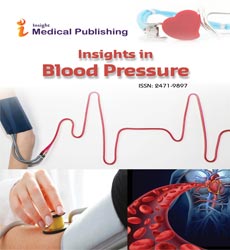Abstract
Nutrition from the perspective of Tibetan medicine - The eight potencies
This presentation analyzes aspects of potency in Tibetan medicine and pharmacology. It aims to bring some new insides from the perspective ofTibetan medicine that focus on the promotion of Health & Food Care contrary to COVID 19.
The connection between illness and poor nutrition is obvious. Most health disorders in both developed and developing countries can be directly or indirectly derived from unhealthy eating habits. Obesity, high blood pressure, arteriosclerosis, diabetes and rheumatism are just a few examples of diseases that result from or are exacerbated by incorrect dietary factors.
Tibetan doctors therefore pay great attention to the best possible adjustment of the diet to the individual disposition. For example, the appropriate selection of nutrient-rich foods and consumption in suitable quantities make an important contribution to maintaining health.
Generally speaking, most physicians who are practising Tibetan medicine today are using up to 150 different compounds, which are not individually adapted to the individual patients but are prescribed as fixed formulas according to the individual constitution and disease of the patient.
Starting with the nus pa brgyad (eight potencies) described in DeumarGeshe Tenzin Püntsok’s (De'udmardgebshesbstan 'dzinphuntshogs, born 1672) introduction of his important materia medica text shel gong shelphreng, the paper firstly aims to deepen the understanding of the meaning of each of the “eight potencies” through detailed explanations and through examples. The relevance of the “eight potencies” and their description in other Tibetan medical texts, such as the rgyudbzhi(Four Treatises), will be discussed. Moreover, based on recent findings from fieldwork in India, Nepal as well as the TAR of China, additional potencies will be presented.
The rgyudbzhi(Four Treatises), includes two chapters which focus on the topic of potencies of Tibetan medicinal substances and foods. These are the twentieth chapter of the Explanatory Treatise, on efficacy of medicinal substances, as well as the twenty-first chapter of the same treatise, which presents the groups and methods of compounding medicines.
In terms of the ’potency’ nüpa (Tib. nus pa) of a medicinal substance and foods, Tibetan texts mainly refer to the place where it is growing, the time when it should be collected, to its ’taste’ ro (Tib. ro), its macroscopic appearance as well as to the astrological aspects that have to be taken into consideration.
Individual plants as well as foods and their efficacy are described in much detail in Tibetan medicine. Furthermore, whether a plant or so thing to eat has cooling or warming properties, and which disorder based on an imbalance of the five elements and sometimes organs are involved. TCM impresses by an exact description of the plants listed in its modern and pre-modern materia medica texts. For example, besides the properties of the plants indicated in Tibetan medical discourse, these texts additionally indicate the recommended daily doses and the specific actions and indications. For instance, a herb may tonify the liver and kidneys, augment the essence, or nourish the blood. On the other hand, usually three different Tibetan formulas are specifically prescribed to be taken each at certain times per day (three times at least before or after meals) and for specific individual aspects of the disorder of the patient. TCM physicians, in contrast, usually prescribe their own individual formula for a specific patient based on the patient’s symptoms, i.e. one to be taken three times per day. TCM practitioners have collected formulas for centuries, and these are particularly impressive because of their precision. Most TCM recipes specify the following roles or categories of ingredients: chief herbs, minister herbs, adjutant herbs as well as messenger herbs. To understand or describe formulas, hierarchical systems such as this one are not used in Tibetan medicine.
Here are some words on the pharmacological principles of Tibetan medicine. There are no plants on earth without medical value according to the seminal, twelth-century Tibetan medical text, the Gyüshi. Physicians of Tibetan medicine express their high respect to the authors of this classical text and their reverence to the Medicine Buddha SangyeMenla (sangsrgyassmangyibla), who is regarded as the original source of Tibetan medicine. Even today major parts of the Gyüshi are still learnt by heart by students of Tibetan medicine. Tibetan medicine, including pharmacology, is part of the classical ’five major sciences’ (Tib. rig gnas ’byungbalnga), and is based on five principle cosmo-physical elements. These five principle elements are concepts dealing also with the subtle qualities of medicinals and foods, and therefore definitions of them as purely physico-chemical elements are not correct. In particular, these subtle qualities determine the physical manifestations of the three bodily 'humours' or ’faults’ (Tib. nyes pa), translated as 'wind' (rlung), 'bile' (mkhris pa), and 'phlegm' (bad kan), that are made up of the five cosmo-physical elements, but also the six ’tastes’ ro and the three ’post-digestive tastes’ zhuje (zhurjes). All these determine the composition, the properties, and varying effects of a specific medical formula. At this point, it is important to point out how, in Tibetan medicine,different effects of medicinal plants can be discerned: with various plants depending on where they had grown, to what weather conditions they had been exposed (known via taste), and under which astrological constellations they had been collected. In most cases, Tibetan medical compounds are
Author(s):
Florian Ploberger
Abstract | PDF
Share this

Google scholar citation report
Citations : 71
Insights in Blood Pressure received 71 citations as per google scholar report
Abstracted/Indexed in
- Google Scholar
- China National Knowledge Infrastructure (CNKI)
- Directory of Research Journal Indexing (DRJI)
- WorldCat
- Secret Search Engine Labs
Open Access Journals
- Aquaculture & Veterinary Science
- Chemistry & Chemical Sciences
- Clinical Sciences
- Engineering
- General Science
- Genetics & Molecular Biology
- Health Care & Nursing
- Immunology & Microbiology
- Materials Science
- Mathematics & Physics
- Medical Sciences
- Neurology & Psychiatry
- Oncology & Cancer Science
- Pharmaceutical Sciences
